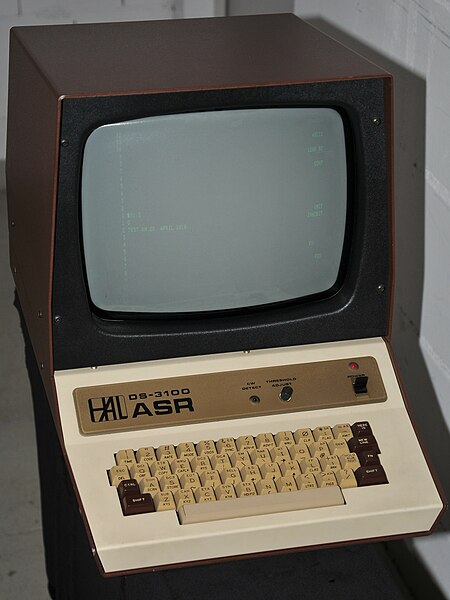Radioteletype (RTTY) is a telecommunications system consisting originally of two or more electromechanical teleprinters in different locations connected by radio rather than a wired link. Radioteletype evolved from earlier landline teleprinter operations that began in the mid-1800s. The US Navy Department successfully tested printing telegraphy between an airplane and ground radio station in 1922. Later that year, the Radio Corporation of America successfully tested printing telegraphy via their Chatham, Massachusetts, radio station to the R.M.S. Majestic. Commercial RTTY systems were in active service between San Francisco and Honolulu as early as April 1932 and between San Francisco and New York City by 1934. The US military used radioteletype in the 1930s and expanded this usage during World War II. From the 1980s, teleprinters were replaced by personal computers (PCs) running software to emulate teleprinters.
Tuning indicator on cathode ray tube
Punched tape of the type used with teleprinters in a Creed model 6S/2 5-hole paper tape reader
Electronic RTTY terminal, ca. 1980
A teleprinter is an electromechanical device that can be used to send and receive typed messages through various communications channels, in both point-to-point and point-to-multipoint configurations.
Teletype teleprinters in use in England during World War II
Example of teleprinter art: a portrait of Dag Hammarskjöld, 1962
Hughes telegraph, an early (1855) teleprinter built by Siemens and Halske. The centrifugal governor to achieve synchronicity with the other end can be seen.
Siemens t37h (1933) without cover







